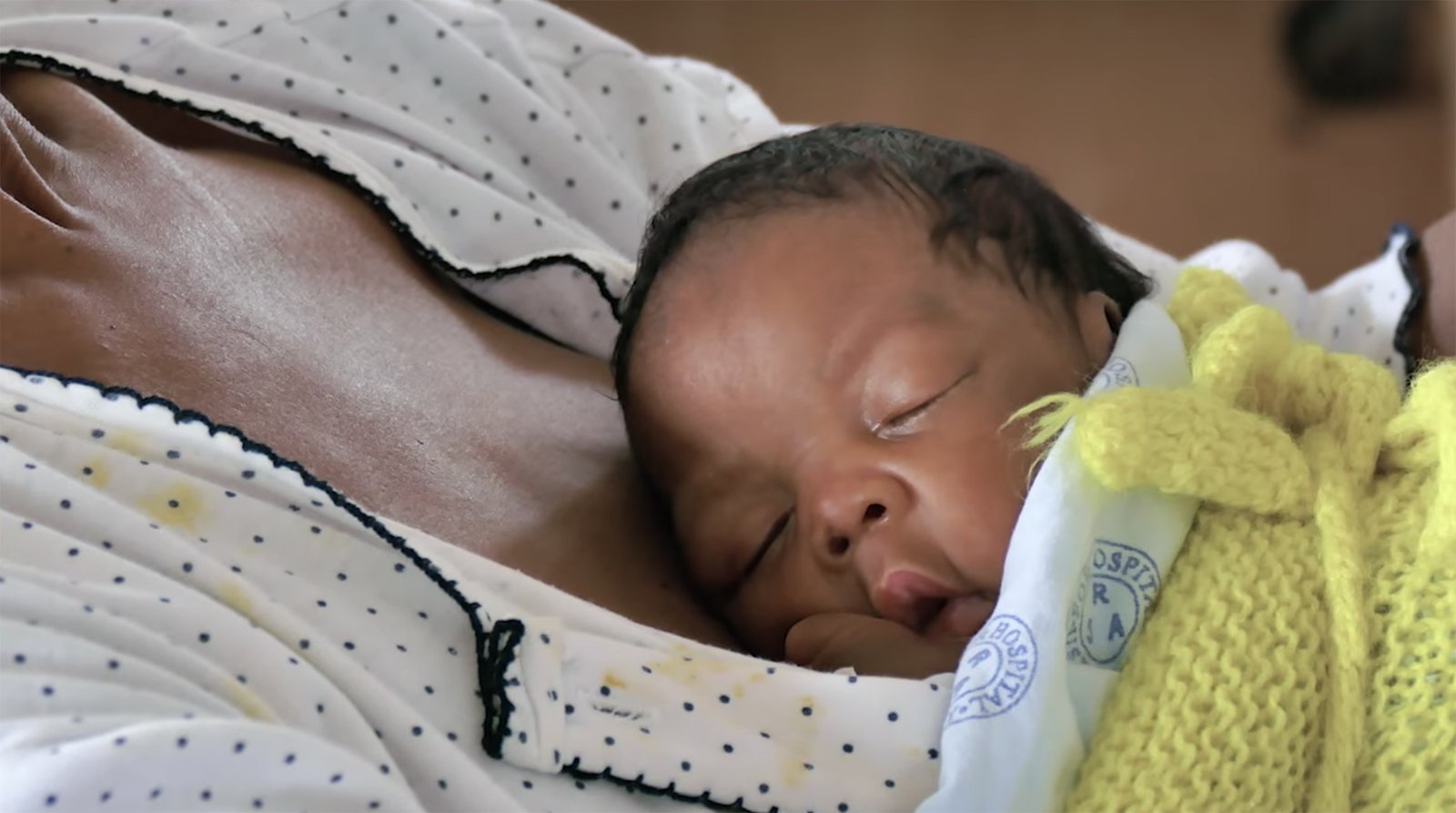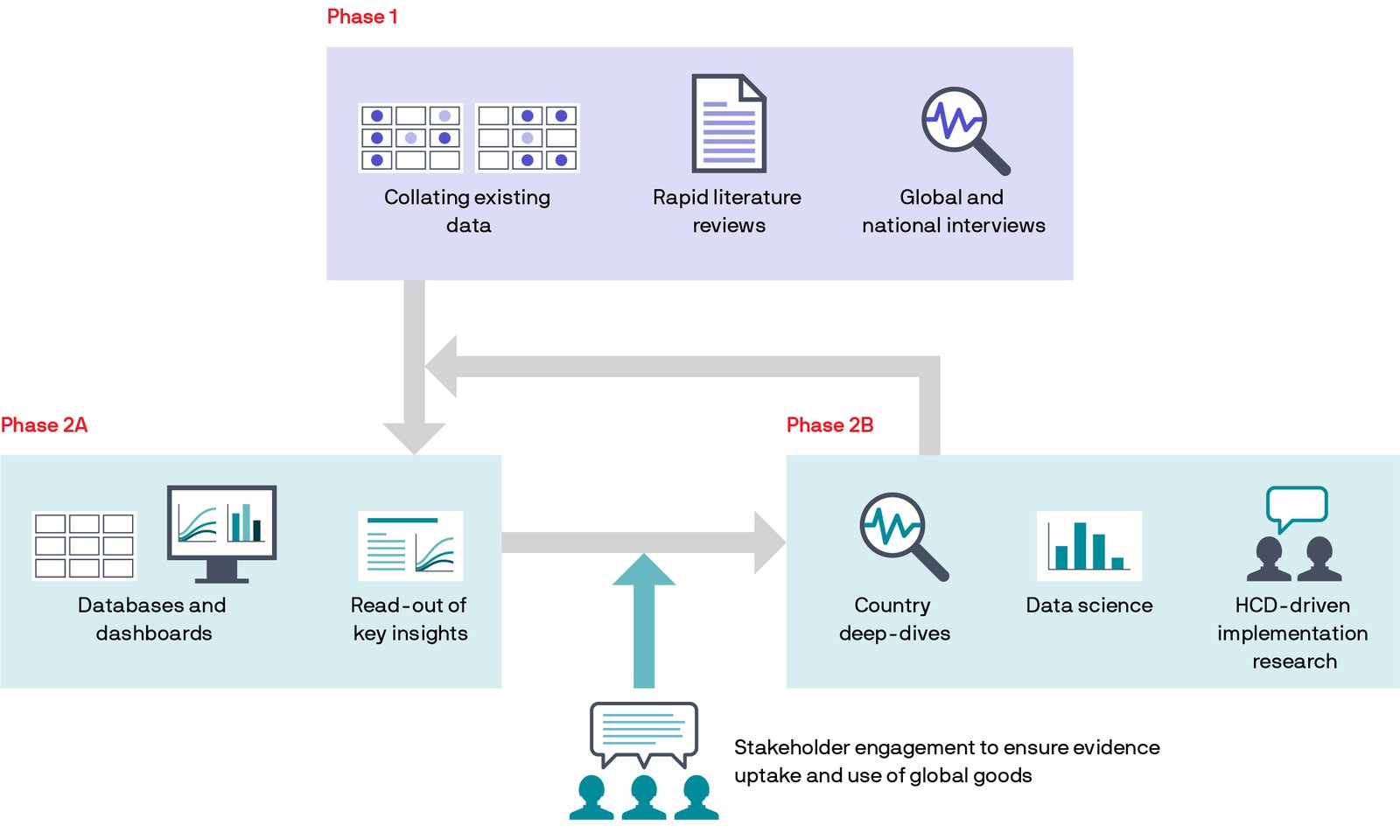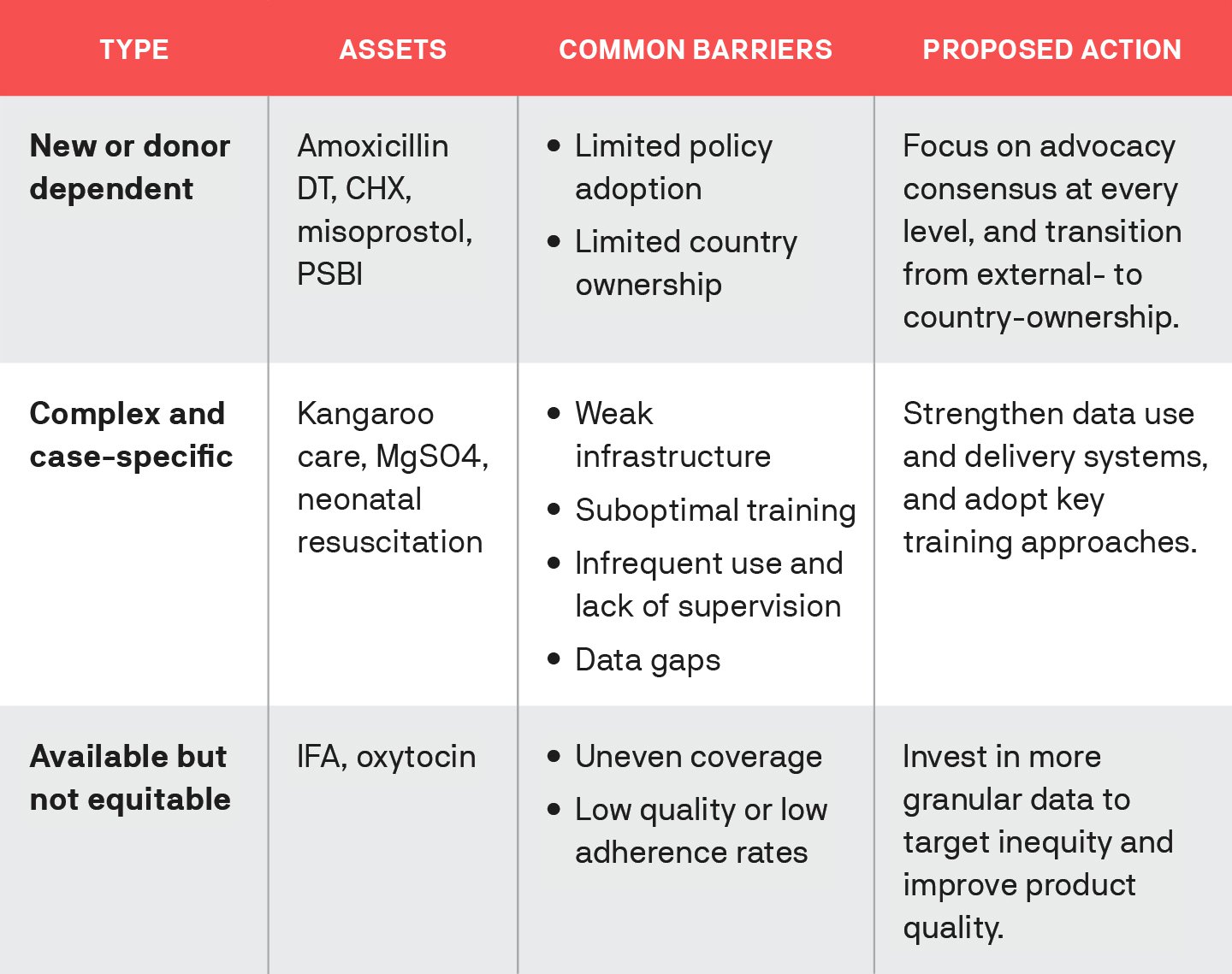Mapping the road to equity in maternal, newborn, and child health
PATH rapidly investigated the coverage and impact of nine key health interventions across 81 countries. The data gathered will help pave the way toward health equity for mothers and their children.
Global thought leadership
Deep institutional expertise
Extensive in-country reach
Agility and speed at scale

The challenge
Despite global progress, huge inequities remain in maternal, newborn, and child health.
The world already possesses the evidence-based interventions we need to close the gaps in health outcomes—oxytocin for postpartum hemorrhage, 7.1% chlorhexidine for umbilical cord care, kangaroo mother care for small infants (pictured), amoxicillin dispersible tablets for childhood pneumonia, and more.
So why aren’t these proven health interventions reaching every mother and child who needs them?
The solution
PATH investigated the coverage and impact of nine key health interventions across 81 countries, with a deep-dive in seven high-priority countries. The health interventions, called “assets,” include drugs, devices, and approaches to improving health. Our vast global network allows us to work quickly across sectors and borders to find solutions fast. We completed the first phase in just ten weeks.
Phase one—and the subject of this case study—was to rapidly assess the current state of those health interventions (assets) and build a body of data that could inform global, national, and local strategies for addressing inequities in maternal, child, and newborn health.
Our second step—currently underway—is to further analyze the data; identify barriers and enablers to access, uptake, implementation, and coverage; and recommend strategies countries can use to accelerate progress toward equitable uptake, implementation, and coverage of each asset.
“Our research is essential for reducing maternal and newborn deaths. It will help countries scale up key interventions, without which, the gains we hope to see will simply not be possible.”— Cyril Engmann, MD, FAAP, PATH program leader
Why was PATH chosen to do this work?
There are lots of impactful nonprofits in the world, and we would know. We partner with many of them. But several key factors led our funder to choose PATH for this project:
- Global thought leaders.
PATH staff are widely regarded as thought leaders in maternal, newborn, and child health. - Deep institutional knowledge and expertise.
PATH has decades of end-to-end experience with many of the health interventions (assets) under consideration. - Extensive in-country reach.
PATH is a trusted partner to ministries of health with on-the-ground presence in key geographies. - Agility and speed at scale.
PATH can operationalize projects around the world at speed and scale unparalleled in global health.
Our approach
We reviewed the available literature, collated indicators from three globally available surveys and databases, conducted key informant interviews with global and national experts, and engaged in data analysis and visualization.
Want to see the data yourself? View the asset tracker dashboards here.

Figure 1. Project methodology.
The assets: Nine key health interventions
These are the tried and true interventions that will help close the inequity gaps mothers, newborns, and children face.
MOTHERS
Iron folic acid (IFA) to prevent maternal nutrient deficiencies, related birth defects, and low-birthweight babies
Magnesium sulfate (MgSO4) for hypertensive disorders of pregnancy
Oxytocin or misoprostol for postpartum hemorrhage prevention and treatment
NEWBORNS
7.1% chlorhexidine (CHX) for umbilical cord care to prevent newborn infections
Kangaroo mother care to help low-birthweight newborns survive
Neonatal resuscitation equipment for newborns with breathing difficulties
CHILDREN
Amoxicillin dispersible tablet (amoxicillin DT) for childhood pneumonia
Managing possible severe bacterial infection (PSBI) with antibiotics when hospitalization isn’t possible

The results
- Data exist but gaps remain. Despite limitations with data availability and consistency, we were able to identify more than 11,000 data points and create 14 interactive data dashboards to visualize where the interventions stood along the pathway to scale-up.
- Assets fall into one of three “types” based on common barriers and other characteristics. The benefit of these types is that they also share common implementation strategies (see Figure 2), allowing for increased efficiency and impact.

Figure 2. Summary of assets by type.
3. Effective strategies must be tailored to each context. Achieving early-stage milestones does not guarantee broad, late-stage coverage when scaling up a health intervention. To guide the efforts of our global partners, we identified key milestones along a six-stage framework (Figure 3) that a health intervention must typically reach in order to achieve equitable coverage.

Figure 3. Framework for scale-up of maternal, newborn, and child health assets.
By analyzing each asset in terms of the steps and milestones, we were able to identify missed opportunities that offer next steps—not only for PATH, but for our country partners and for any organization working to improve public health.
The road to health equity
With phase one complete, PATH and our country partners can now make new progress informed by the latest evidence.
Leveraging our initial findings, in phase two we’re adding five more health interventions to the study and we're diving deeper into the data. Our expert team will conduct detailed health system assessments in five focus countries using subnational data.
By deepening the world’s understanding of barriers at the facility (subnational) level, we can further test and refine phase one findings; hone in on gaps, barriers, and facilitators; and map the way toward a healthier, more equitable world for mothers and their children.
Partners in the pursuit

The Asset Tracker project is made possible by funding from The Bill & Melinda Gates Foundation.
Lead photo: A new mother in Durban, South Africa practices "kangaroo mother care," skin-to-skin contact between the baby's front and the mother's chest. Photo: PATH.